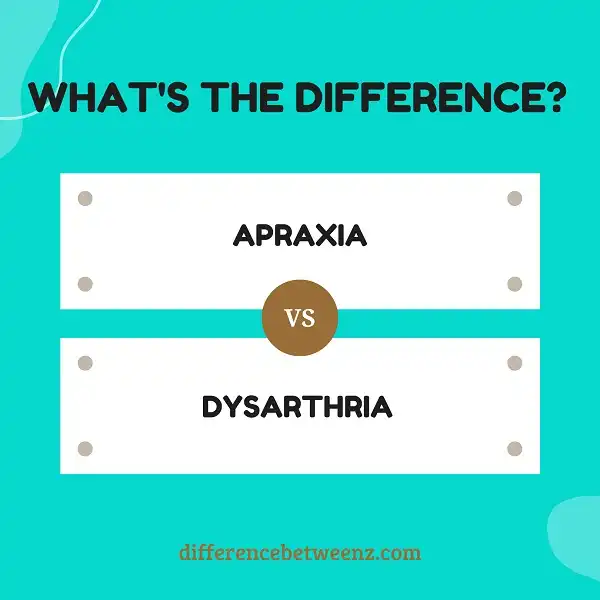Apraxia vs Dysarthria
Difference between apraxia and dysarthria: – Apraxia is the inability to perform previously learned movements despite having the desire and physical strength to carry out the activity. On the other hand, dysarthria is simply difficulty with the articulation of words; ‘Dis’ means abnormal or difficult and ‘arthria’ refers to the articulation of words when speaking. Both are disorders of the central nervous system and both have the same result of error and difficulty in speech. This post is all about to know the difference between apraxia and dysarthria. Keep reading…
Difference between apraxia and dysarthria
Dysarthria is the result of a neurological injury in some of the components of the motor speech system, that is, the neuromuscular system involved in the speech process. In contrast, apraxia is an acquired disorder that has to do with motor planning. It is the result of a deterioration of the capacity to generate the motor programs in charge of the movements when speaking, such as moving the language in a particular way. In the case of dysarthria, an error occurs in the transmission of the impulses that control the motor movements of the speech. In this case the muscular control is interrupted due to injuries, whether of the central or peripheral nervous system i.e.; is characterized by difficulty in the pronunciation of words.
Dysarthria can be caused by a brain injury (tumor), nerve damage during surgery, neuromuscular diseases (Parkinson’s disease) or alcohol poisoning. Dysarthria causes a transmission error, but in apraxia the error is coordination and programming necessary for a movement to occur. The person with apraxia has the will and knowledge to speak, but cannot implement the order. Auditory information and understanding are also normal in apraxic individuals.
Injuries to the central nervous system (brain and spinal cord) cause spastic dysarthria, where the contraction of muscles is not continuous; while lesions of the peripheral nervous system cause peripheral flaccid dysarthria. The errors that occur in dysarthria are consistent and predictable and consist mainly of speech distortions and omissions.
Apraxia occurs due to damage to the brain, especially in those parts of the brain that work intervenes in speech. Therefore, in most cases it is the left part of the brain that has been affected. Mistakes often occur mostly when a person is not having a spontaneous speech, but when performing it out of context.
Discourse aspects such as articulation, phonation, resonance, frequency and respiration are affected with dysarthria, while all these elements remain almost normal in cases of apraxia.
In dysarthria, movement of the tongue, lips and soft palate may be affected. Therefore, there are often problems associated with difficulty swallowing food in patients suffering from this problem. In patients with apraxia, the muscle is not what is affected. This is one of the main differences between this condition and dysarthria.


